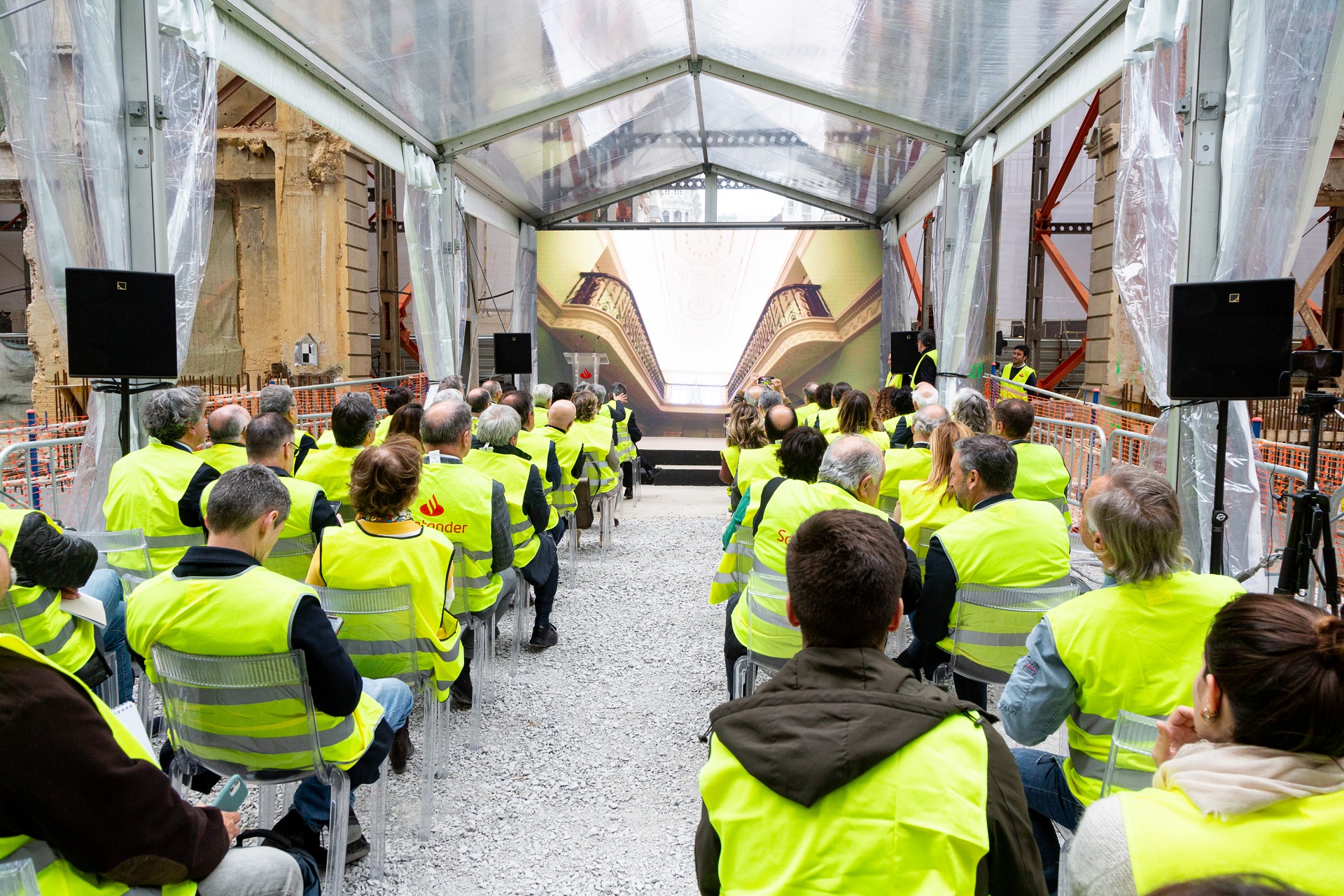Cultural space that will house Banco Santander HQ to be called Faro Santander


After two years of deconstruction to empty out the historic building on Paseo Pereda, Banco Santander is to begin works on what will be a space for culture, technology and leisure.
Santander, 23 March 2023.
At a meeting today with customers and shareholders in Cantabria, north Spain, Banco Santander Executive Chair, Ana Botín unveiled the name of the cultural space that the bank has been creating at its headquarters in the city of Santander on Paseo Pereda. Christened "Faro Santander" (faro means "lighthouse" or "beacon" in Spanish) it will become a cultural, intellectual and institutional point of reference for the city of Santander and the region of Cantabria. Santander has its corporate headquarters in Boadilla del Monte, Madrid.




Banco Santander Executive Chair, Ana Botín, said: "This building is the best witness of our evolution as a bank, from what we were to what we are, and today it becomes Faro Santander, as a space where the past and the future go hand in hand".
Project architect and winner of the 2023 Pritzker Architecture Prize David Chipperfield said: “We are excited to see the work on site progress to the next stage and to be moving closer to returning this building to the city and to Banco Santander in its new role as a venue for culture, technology and innovation. Our ambition with this project on Paseo de Pereda is to create a destination that will enhance the experience of daily life in the city through accommodating a vibrant programme and embracing the opportunities of its extraordinary location.”
After interior remodelling and stabilizing the façade, which took nearly two years, works are now entering the construction phase to shape the floors and interior spaces. Faro Santander will have three floors for art exhibitions, a floor for learning about technology, a multi-purpose auditorium that seats 150 people, and a roof terrace and observation deck of some 1,000 m2 to show off privileged views of the Bay of Santander.
Botín added that Banco Santander's challenge is "to continue to lead the banking of the future with this headquarters as proof positive of our capacity to innovate and stay cutting-edge. A great public centre for art, innovation, leisure and entrepreneurship that will be an essential meeting point for the people of Santander and for the nearly two million tourists who visit Santander every year”. She also emphasized the bank's close ties with, and commitment to, the local area: "The city of Santander is our origin and that link will always remain. Our challenge is for Santander to continue to lead the banking of the future, and a new stage is beginning on very solid foundations.”
Faro Santander will host activities run by Fundación Banco Santander, including displays of the Banco Santander Collection, temporary exhibitions, performing arts and technology, with a strong educational, social and environmental focus. Art and technology will be at its heart to run educational and cultural activities for all audiences and to allow visitors to enjoy art in a variety of settings.

Transformation of the Paseo Pereda HQ tied to the history of Banco Santander
The transformation of the Paseo Pereda headquarters has always meant to adapt the building to immediate needs in the history of Banco Santander.
The building, which dates back to 1795, is part of the bank's fabric. It was rebuilt in 1880 after one of the fires that regularly ravaged the area. When Santander acquired it in 1919, the building changed from a hotel to the bank's headquarters, which officially opened in 1923. It was where the bank held its first AGM. It was also an important place that stored the banknotes and coins that the bank issued, in addition to customers' deposits and securities.
In the 1950s, Santander revamped its headquarters by renovating Paseo de Pereda 9 and 10 in the style of the adjacent buildings 11 and 12, before joining them with a monumental arch. This coincided with Santander's rise as a regional bank to one of Spain's most important institutions on the brink of international expansion. Later on, this headquarters would be the place where the bank's leaders would forge some of its most important deals in Argentina, Mexico and Brazil.

